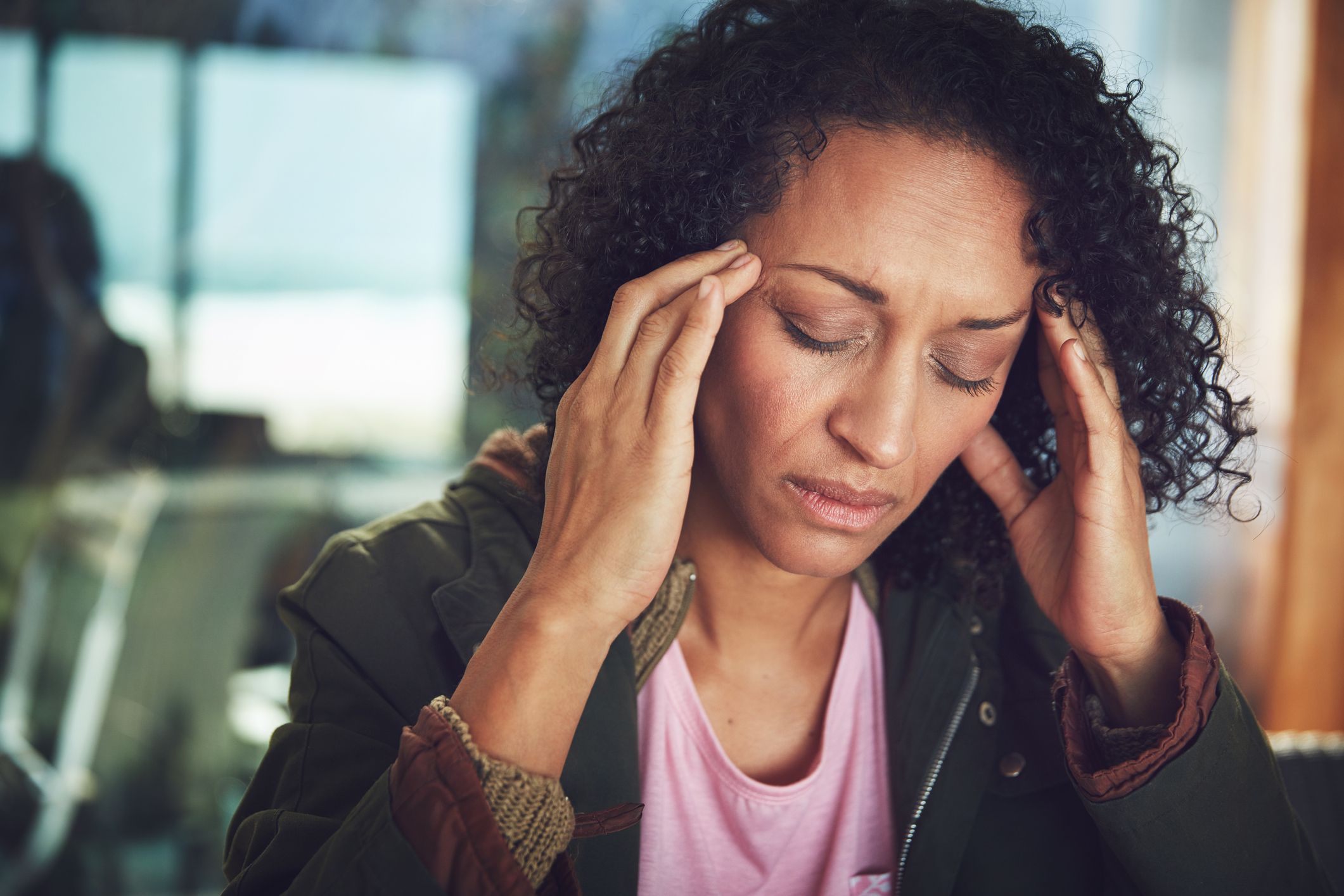Do you know what a headache feels like?
You'd be in the minority if you didn't.
When it comes to pain, headaches rank high as a common cause. When it comes to missing work or visiting the doctor, they're way up there, as well.
It's estimated that almost half of the adult population has had at least one headache in the last year. And many times, these disabling and painful disorders are hard to treat. Although they are less common with age, they still exist: an estimated 15 percent to 20 percent of adults over 60 have more than two a month.
Headaches are not a one-size-fits-all deal. They come in many shapes and sizes.
Is it a tension headache? You'll know it if you feel a dull, squeezing pain on your forehead, scalp, temples, jaw or the back of your neck. You will probably feel pressure or tightness. Tension headache is the most common primary headache disorder and usually begins around adolescence. It affects three women to every two men and can be set off by stress or musculoskeletal problems in the neck. These headaches can last a few hours but can also hang around for several days.
Or maybe, it's a migraine: These commonly hit just one side of your head. They usually start around puberty, and most often affect people between the ages of 35 and 45. Unfortunately, as women, we are more prone to migraines because of hormonal influences. These are tough—I can attest to that fact. I've had migraines that have lasted for days (that's not uncommon) and have resulted in such severe nausea that it led to vomiting (also not uncommon). Some people get migraines once a year; others, once a week or more.
If you have headaches more than 15 days per month, and more than half of those headache days are associated with migraines, you may have chronic migraine. Other signs of this chronic—and painful—condition include: your headaches last four or more hours and interfere with your work, school or other activities; and you often take medications for your headaches. Talk to your health care provider if you think you may have chronic migraine, and you may need to see a specialist to make sure you get the proper medication.
Cluster headaches and are the one type of headache that affects more men than women (six men for every woman). The pain is often one-sided and causes a sensation that feels like stabbing in your eye. Your eye might also get red, teary and droopy, and you may have a runny or stuffed nose. Relatively uncommon, this type of headache affects fewer than 1 in 1,000 adults and can occur frequently—up to several times a day.
Sinus and allergy headaches, when self-diagnosed, are often actually migraines, according to the American Academy of Asthma and Immunology. The two are often confused because they can both occur in the front of the head. A sinus headache may also cause pain in the top of your head, depending on which sinus cavities are infected. Sinus headaches stem from infection or inflammation in your sinuses, known as sinusitis. The pain is often worse in the morning. A physician can diagnose ta sinus headache with certainty by evaluating your symptoms and sometimes performing a nasal endoscopy.
Hormonal headaches are common, thanks to fluctuating levels of estrogen and progesterone, which can affect brain chemicals related to headaches. The drop in estrogen just before your period can set off a migraine. This type of headache is rare during pregnancy because estrogen levels are high. But, of course, perimenopause and menopause are notorious for their ability to bring on headaches.
Headache Help
Headaches can be managed in many ways. Making lifestyle changes, practicing stress relief and taking pain relievers like aspirin, ibuprofen or acetaminophen (and decongestants if it's a sinus problem) can help.
But beware: chronic or excessive use of these can backfire and result in yet another type of headache known as a rebound or medication-overuse headache, which affects up to 5 percent of the population and can be difficult and persistent. It is usually worse when you wake up.
Sensitivity to certain foods and beverages can cause headaches for some people. Most notorious are dark chocolate, aged cheese, cured meats and alcohol. Certain additives, like MSG and nitrates can be culprits, too, as can gluten—about one in five people with confirmed celiac disease suffer from headaches, according to Tufts University.
Caffeine, too, can cause headaches—not when you drink it, but when you don't. That's known as rebound vasodilation (caffeine is a vasoconstrictor, meaning it causes a narrowing of your blood vessels).
As common as headaches are, you should inform your health care provider if your headache comes on suddenly or is unusually severe (explosive or violent) or if you begin to get headaches and you're over 50.
If a headache follows a blow to the head or is accompanied by things like a stiff neck, fever, confusion, slurred speech, vision change, loss of consciousness or pain in your eye or ear, seek medical help.
More Reading:
Pain Management
Professional Patient: Skills Learned from Living with a Chronic Disease
- Migraine ›
- Botox and Migraine: What You Need to Know ›
- Fact Facts: Everything You Need to Know About Migraine Disease ›
- Got a Headache? Sometimes Less is More. - HealthyWomen ›
- 8 tipos de migrañas - HealthyWomen ›
- Preguntas y respuestas relacionadas con el trastorno de migrañas - HealthyWomen ›
- 8 Types of Migraines - HealthyWomen ›
- Questions and Answers About Migraine Disease - HealthyWomen ›


